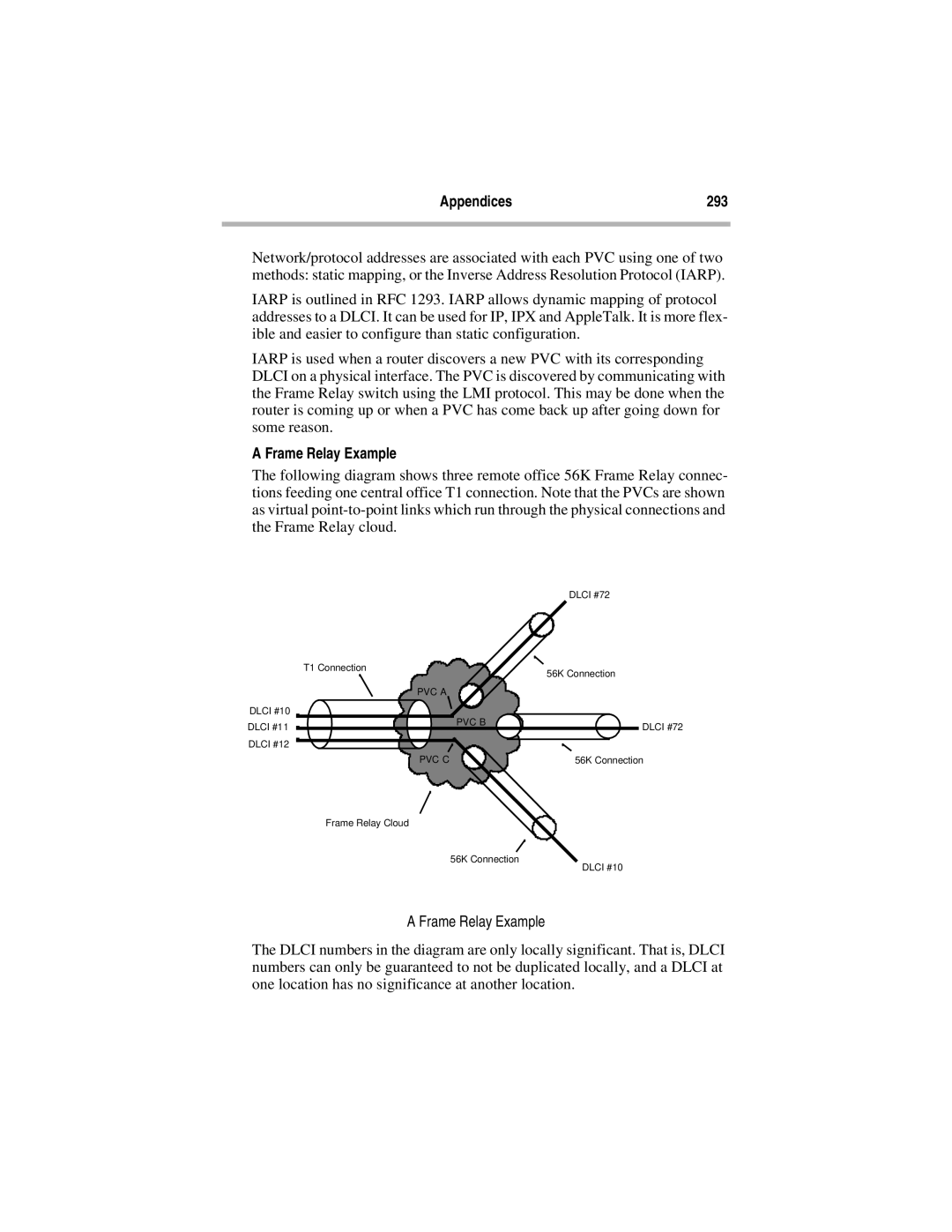
Appendices | 293 |
|
|
Network/protocol addresses are associated with each PVC using one of two methods: static mapping, or the Inverse Address Resolution Protocol (IARP).
IARP is outlined in RFC 1293. IARP allows dynamic mapping of protocol addresses to a DLCI. It can be used for IP, IPX and AppleTalk. It is more flex- ible and easier to configure than static configuration.
IARP is used when a router discovers a new PVC with its corresponding DLCI on a physical interface. The PVC is discovered by communicating with the Frame Relay switch using the LMI protocol. This may be done when the router is coming up or when a PVC has come back up after going down for some reason.
A Frame Relay Example
The following diagram shows three remote office 56K Frame Relay connec- tions feeding one central office T1 connection. Note that the PVCs are shown as virtual
DLCI #72
T1 Connection |
| 56K Connection |
|
| |
PVC A |
|
|
DLCI #10 |
|
|
DLCI #11 | PVC B | DLCI #72 |
| ||
DLCI #12 |
|
|
PVC C |
| 56K Connection |
Frame Relay Cloud
56K Connection
DLCI #10
A Frame Relay Example
The DLCI numbers in the diagram are only locally significant. That is, DLCI numbers can only be guaranteed to not be duplicated locally, and a DLCI at one location has no significance at another location.
